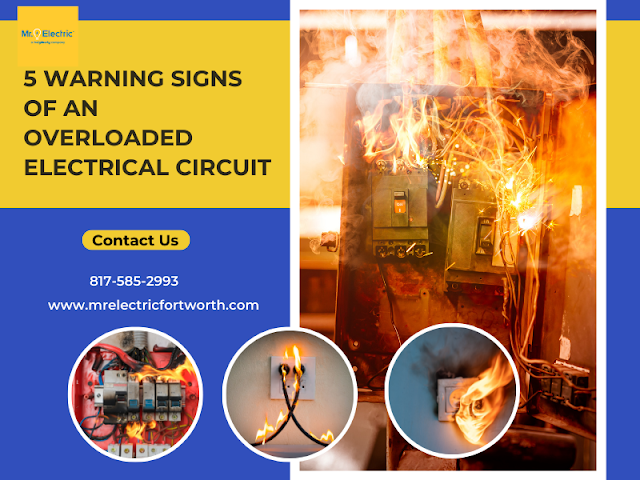5 Warning Signs of an Overloaded Electrical Circuit
In our modern world, electricity is the lifeblood of our daily lives. From powering our homes to charging our devices, we rely on electrical circuits to keep everything running smoothly. However, it's essential to understand that these circuits have limits, and overloading them, as seen in The Electrician in Saginaw, can lead to dangerous consequences. In this blog post, we'll explore the warning signs of an overloaded electrical circuit, helping you stay safe and prevent potential disasters.
1. Frequent Circuit Breaker Trips
One of the most common and noticeable signs of an overloaded electrical circuit is the frequent tripping of circuit breakers. Circuit breakers are designed to protect your electrical system by interrupting the flow of electricity when it exceeds safe levels. When a circuit is overloaded, it draws more current than it can handle, causing the circuit breaker to trip and cut off power.
If you find yourself constantly resetting circuit breakers in your home, it's a clear indication that something is amiss. You should never ignore this warning sign, as it not only disrupts your daily activities but also poses a significant fire hazard. Instead, identify the cause of the overload and take steps to rectify it, such as redistributing the load among different circuits or consulting a qualified electrician.
2. Flickering or Dimming Lights
Have you ever noticed your lights flickering or dimming when you turn on certain appliances or devices? This can be another red flag for an overloaded circuit. When you plug in power-hungry appliances like air conditioners, space heaters, or large kitchen appliances, you draw a substantial amount of current. If the circuit is already near its capacity, the voltage can drop, causing your lights to flicker or dim temporarily.
While this may not seem like a severe issue, it's essential to address it promptly. Not only is it an inconvenience, but it can also indicate that your electrical system is struggling to cope with the demand, potentially leading to overheating and fire hazards. To mitigate this problem, consider redistributing your appliances across multiple circuits or installing dedicated circuits for high-power devices.
3. Warm or Hot Outlets and Switches
Another warning sign of an overloaded circuit is the presence of warm or hot outlets and switches. When a circuit is overloaded, the wires and connections can heat up due to the excessive current flow. This heat can be transferred to the surrounding components, including outlets and switches. If you notice that your outlets or switches are warm to the touch or emit a burning odor, it's a clear indication of a problem that demands immediate attention.
Hot outlets and switches are not only a fire hazard but also a potential source of electrical shocks. Do not attempt to use these outlets or switches until the issue is resolved by a qualified electrician. We will assess the situation, identify the cause of the overload, and take appropriate measures to ensure your safety.
4. Discolored Outlets or Wall Plates
Overloaded circuits can also manifest as discolored outlets or wall plates. If you notice that your outlets have turned brown or black, or the surrounding wall plates have become discolored, it's a sign of heat damage resulting from excessive current flow. This discoloration is a clear indication that the circuit has been pushed beyond its limits, potentially leading to a fire hazard.
To address this issue, you should immediately stop using the affected outlets and consult an electrician. We may need to replace damaged components, upgrade the circuit, or redistribute the load to prevent further damage.
5. Electrical Appliances Running Slower or Not Working Properly
When an electrical circuit is overloaded, it can affect the performance of connected appliances and devices. You might notice that your appliances run slower, take longer to complete tasks, or don't function correctly. This is because we are not receiving the necessary voltage to operate efficiently.
For example, if you're using a space heater on an overloaded circuit, it may not produce as much heat as expected. Similarly, computers and electronics may experience frequent crashes or errors. This can not only be frustrating but also lead to premature wear and tear on your valuable devices.
To prevent this issue, ensure that you do not overload circuits by plugging too many devices into a single outlet or power strip. Consider using surge protectors with built-in circuit breakers to safeguard your electronics from voltage fluctuations.
In conclusion
An overloaded electrical circuit is a serious issue that can result in inconvenience, property damage, and even life-threatening situations. Recognizing warning signs like frequent circuit breaker trips, flickering lights, hot outlets, discolored components, and impaired appliance performance is essential for ensuring your safety. Trust Mr. Electric of Fort Worth for expert electrical solutions we provide top-notch service.




Comments
Post a Comment